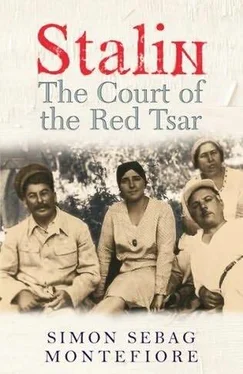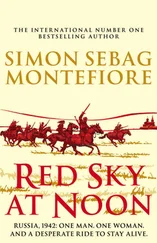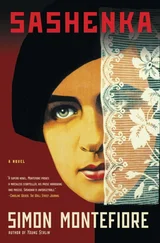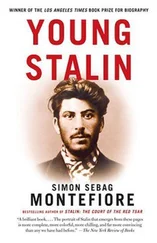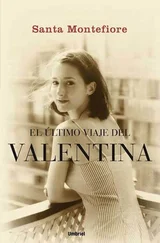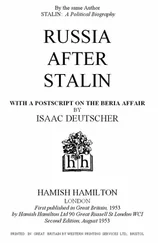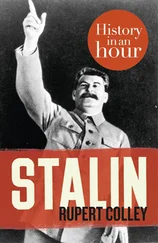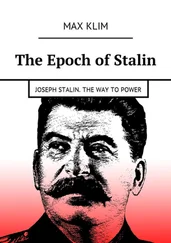“Beat, destroy without sorting out,” Yezhov ordered his henchmen. Those who showed “operational inertness” in the arrests of “counter-revolutionary formations within and outside the Party… Poles, Germans and kulaks” would themselves be destroyed, but most now “tried to surpass each other with reports about gigantic numbers of people arrested.” Yezhov, clearly taking his cue from the Five, actually specified that “if during this operation, an extra thousand people will be shot, that is not such a big deal.” Since Stalin and Yezhov constantly pushed up the quotas, an extra thousand here and there was inevitable but the point was that they deliberately destroyed an entire “caste.” And, like Hitler’s Holocaust, this was a colossal feat of management. Yezhov even specified what bushes should be planted to cover mass graves. 2
Once this massacre had started, Stalin almost disappeared from public view, appearing only to greet children and delegations. The rumour spread that he did not know what Yezhov was doing. Stalin spoke in public only twice in 1937 and once in 1938, cancelling all his holidays (he did not go southwards again until 1945). Molotov gave the 6 November addresses in both years. The writer Ilya Ehrenburg met Pasternak in the street: “He waved his arms around as he stood between the snowdrifts: ‘If only someone would tell Stalin about it.’” The theatrical director Meyerhold told Ehrenburg, “They conceal it from Stalin.” But their friend, Isaac Babel, lover of Yezhov’s wife, learned the “key to the puzzle”: “Of course Yezhov plays his part but he’s not at the bottom of it.” 3
Stalin was the mastermind but he was far from alone. Indeed, it is neither accurate nor helpful to blame the Terror on one man because systematic murder started soon after Lenin took power in 1917 and never stopped until Stalin’s death. This “social system based on blood-letting” justified murder now with the prospect of happiness later. The Terror was not just a consequence of Stalin’s monstrosity but it was certainly formed, expanded and accelerated by his uniquely overpowering character, reflecting his malice and vindictiveness. “The greatest delight,” he told Kamenev, “is to mark one’s enemy, prepare everything, avenge oneself thoroughly and then go to sleep.” It would not have happened without Stalin. Yet it also reflected the village hatreds of the incestuous Bolshevik sect where jealousies had seethed from the years of exile and war.
Stalin and his faction regarded the Civil War as their finest hour: 1937 was a Tsaritsyn reunion, as Stalin even reminisced to a group of officers: “We were in Tsaritsyn with Voroshilov,” he began. “We exposed [Enemies] within a week, even though we didn’t know military affairs. We exposed them because we judged them by their work and if today’s political workers judge men by their actual work, we would soon expose the Enemies in our army.” 4
The anti-Bolshevik resurgence of Germany was real enough, the Spanish War setting new standards for betrayal and brutality. Economic disasters were glaring: Molotov’s papers reveal there was still famine and cannibalism, [111] On 14 April 1937, Procurator-General Vyshinsky wrote to the Premier to inform him of a cluster of cases of cannibalism in Cheliabinsk in the Urals in which one woman ate a four-month-old child, another ate an eight-year-old with her thirteen-year-old, while yet another consumed her three-month-old baby.
even in 1937. 5
The corruption of grandees was notorious: Yagoda seemed to be running palaces and diamond deals out of official funds, Yakir renting out dachas like a landlord. The wives of marshals, such as Olga Budyonny and her friend Galina Yegorova, Stalin’s fancy at Nadya’s last supper, blossomed at embassies and “salons, reminiscent of glittering receptions… in aristocratic Russia” with “dazzling company, stylish clothes.”
“Why have the prices flown upwards 100% while nothing is in the shops,” Maria Svanidze asked her diary. “Where is the cotton, flax and wool when medals were won for beating the Plan? And the construction of private dachas… crazy money spent on magnificent houses and rest homes?” 6
The responsibility lies with the hundreds of thousands of officials who ordered, or perpetrated, the murders. Stalin and the magnates enthusiastically, recklessly, almost joyfully, killed, and they usually killed many more than they were asked to kill. None were ever tried for these crimes. 7
Stalin was surprisingly open with his circle about the aim to “finish off” all their Enemies. He could tell his cronies this quite openly at Voroshilov’s May Day party, as reported by Budyonny. He seems to have constantly compared his Terror to Ivan the Terrible’s massacre of the boyars . “Who’s going to remember all this riffraff in ten or twenty years’ time? No one. Who remembers the names now of the boyars Ivan the Terrible got rid of? [112] This is eerily like Hitler’s comment on the genocide of the Jews, referring to the Turkish slaughter of the Armenians in 1915: “After all, who today speaks of the massacre of the Armenians?”
No one… The people had to know he was getting rid of all of his enemies. In the end, they all got what they deserved.”
“The people understand, Joseph Vissarionovich, they understand and they support you,” replied Molotov. Similarly, he told Mikoyan, “Ivan killed too few boyars . He should have killed them all, to create a strong state.” The magnates were not as oblivious of Stalin’s nature as they later claimed. 8
While the regions fulfilled their nameless quotas, Stalin was also killing thousands whom he knew well. Yezhov visited Stalin virtually every day. Within a year and a half, 5 of the 15 Politburo members, 98 of the 139 Central Committee members and 1,108 of the 1,966 delegates from the Seventeenth Congress had been arrested. Yezhov delivered 383 lists of names—which were known as “albums” since they often contained photographs and potted biographies of the proposed victims—and proposed: “I request sanction to condemn them all under the First Category.”
Most of the death lists were signed by Stalin, Molotov, Kaganovich and Voroshilov but many were also signed by Zhdanov and Mikoyan. On some days, for example 12 November 1938, Stalin and Molotov signed 3,167 executions. Usually they simply wrote: “For,” VMN or Vishka . Molotov admitted: “I signed most—in fact almost all—the arrest lists. We debated and made a decision. Haste ruled the day. Could one go into all the details?… Innocent people were sometimes caught. Obviously one or two out of ten were wrongly caught, but the rest rightly.” As Stalin had put it, “Better an innocent head less, than hesitations in the war.” They ordered the deaths of 39,000 on these lists of names. Stalin marked lists with notes to Yezhov: “Comrade Yezhov, those whose names I’ve marked ‘arr’ should be arrested if not already.” Sometimes Stalin simply wrote: “Shoot all 138 of them.” When Molotov received regional death lists, he simply underlined the numbers, never the names. Kaganovich remembered the frenzy of that time: “What emotions!” They were “all responsible” and perhaps “guilty of going too far.” 9
Stalin declared that the son should not suffer for the sins of the father but then carefully targeted the families of Enemies: this may have reflected his Caucasian mentality or merely the incestuous labyrinth of Bolshevik connections. “They had to be isolated,” explained Molotov, “otherwise they’d have spread all kinds of complaints.” On 5 July 1937, the Politburo ordered the NKVD to “confine all wives of condemned traitors… in camps for 5–8 years” and to take under State protection children under fifteen: 18,000 wives and 25,000 children were taken away. But this was not enough: on 15 August, Yezhov decreed that children between one and three were to be confined in orphanages but “socially dangerous children between three and fifteen” could be imprisoned “depending on the degree of danger.” Almost a million of these children were raised in orphanages and often did not see their mothers for twenty years. [113] This reached its climax when sixty children aged between ten and twelve were accused of forming “a terrorist counter-revolutionary group” in Leninsk-Kuznetsk and were imprisoned for eight months, until the NKVD themselves were arrested and the children released.
10
Читать дальше
